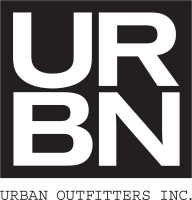
Mercadolibre Inc
NASDAQ:MELI


| US |

|
Johnson & Johnson
NYSE:JNJ
|
Pharmaceuticals
|
| US |

|
Berkshire Hathaway Inc
NYSE:BRK.A
|
Financial Services
|
| US |

|
Bank of America Corp
NYSE:BAC
|
Banking
|
| US |

|
Mastercard Inc
NYSE:MA
|
Technology
|
| US |

|
UnitedHealth Group Inc
NYSE:UNH
|
Health Care
|
| US |

|
Exxon Mobil Corp
NYSE:XOM
|
Energy
|
| US |

|
Pfizer Inc
NYSE:PFE
|
Pharmaceuticals
|
| US |

|
Palantir Technologies Inc
NYSE:PLTR
|
Technology
|
| US |

|
Nike Inc
NYSE:NKE
|
Textiles, Apparel & Luxury Goods
|
| US |

|
Visa Inc
NYSE:V
|
Technology
|
| CN |

|
Alibaba Group Holding Ltd
NYSE:BABA
|
Retail
|
| US |

|
JPMorgan Chase & Co
NYSE:JPM
|
Banking
|
| US |

|
Coca-Cola Co
NYSE:KO
|
Beverages
|
| US |

|
Walmart Inc
NYSE:WMT
|
Retail
|
| US |

|
Verizon Communications Inc
NYSE:VZ
|
Telecommunication
|
| US |

|
Chevron Corp
NYSE:CVX
|
Energy
|
Utilize notes to systematically review your investment decisions. By reflecting on past outcomes, you can discern effective strategies and identify those that underperformed. This continuous feedback loop enables you to adapt and refine your approach, optimizing for future success.
Each note serves as a learning point, offering insights into your decision-making processes. Over time, you'll accumulate a personalized database of knowledge, enhancing your ability to make informed decisions quickly and effectively.
With a comprehensive record of your investment history at your fingertips, you can compare current opportunities against past experiences. This not only bolsters your confidence but also ensures that each decision is grounded in a well-documented rationale.
Do you really want to delete this note?
This action cannot be undone.

| 52 Week Range |
1 666
2 613.63
|
| Price Target |
|
We'll email you a reminder when the closing price reaches USD.
Choose the stock you wish to monitor with a price alert.

|
Johnson & Johnson
NYSE:JNJ
|
US |

|
Berkshire Hathaway Inc
NYSE:BRK.A
|
US |

|
Bank of America Corp
NYSE:BAC
|
US |

|
Mastercard Inc
NYSE:MA
|
US |

|
UnitedHealth Group Inc
NYSE:UNH
|
US |

|
Exxon Mobil Corp
NYSE:XOM
|
US |

|
Pfizer Inc
NYSE:PFE
|
US |

|
Palantir Technologies Inc
NYSE:PLTR
|
US |

|
Nike Inc
NYSE:NKE
|
US |

|
Visa Inc
NYSE:V
|
US |

|
Alibaba Group Holding Ltd
NYSE:BABA
|
CN |

|
JPMorgan Chase & Co
NYSE:JPM
|
US |

|
Coca-Cola Co
NYSE:KO
|
US |

|
Walmart Inc
NYSE:WMT
|
US |

|
Verizon Communications Inc
NYSE:VZ
|
US |

|
Chevron Corp
NYSE:CVX
|
US |
This alert will be permanently deleted.
Mercadolibre Inc




In the vibrant and rapidly evolving landscape of Latin American e-commerce, MercadoLibre, Inc. stands out as a formidable titan, weaving together the threads of commerce and digital payment into a comprehensive marketplace fabric. Founded in 1999 by Marcos Galperin in Buenos Aires, the company has transformed itself into a critical facilitator of online transactions, akin to what Amazon represents in North America or Alibaba in Asia. Stretching its reach across 18 countries, MercadoLibre operates the largest online marketplace in Latin America, providing a platform where millions of people buy, sell, and interact with an array of products. Sellers of various scales—ranging from large retailers to small, independent vendors—leverage MercadoLibre's extensive platform to reach a diverse customer base. This ecosystem not only enables smooth transactions for tangible goods but also digital services, thus capturing a wide spectrum of e-commerce needs.
Beyond its robust marketplace, MercadoLibre has adeptly expanded into fintech through MercadoPago, its digital payments arm, further solidifying its position in the regional market. MercadoPago encompasses a set of services such as an online wallet, payment processing solutions for merchants, and even a line of credit offerings. This diversification allows MercadoLibre to not only capture revenue from transaction fees on its marketplace but also from facilitating and processing payments, akin to a Helmsman steering its ship through both e-commerce and digital finance waters. By bundling these services, the company builds a symbiotic relationship where its platforms enhance each other's value and use, thereby engaging users in more than just retail transactions, but into a holistic digital economy experience. This dual-engine growth strategy positions MercadoLibre as a significant catalyst in the digital transformation sweeping across Latin America.

In the vibrant and rapidly evolving landscape of Latin American e-commerce, MercadoLibre, Inc. stands out as a formidable titan, weaving together the threads of commerce and digital payment into a comprehensive marketplace fabric. Founded in 1999 by Marcos Galperin in Buenos Aires, the company has transformed itself into a critical facilitator of online transactions, akin to what Amazon represents in North America or Alibaba in Asia. Stretching its reach across 18 countries, MercadoLibre operates the largest online marketplace in Latin America, providing a platform where millions of people buy, sell, and interact with an array of products. Sellers of various scales—ranging from large retailers to small, independent vendors—leverage MercadoLibre's extensive platform to reach a diverse customer base. This ecosystem not only enables smooth transactions for tangible goods but also digital services, thus capturing a wide spectrum of e-commerce needs.
Beyond its robust marketplace, MercadoLibre has adeptly expanded into fintech through MercadoPago, its digital payments arm, further solidifying its position in the regional market. MercadoPago encompasses a set of services such as an online wallet, payment processing solutions for merchants, and even a line of credit offerings. This diversification allows MercadoLibre to not only capture revenue from transaction fees on its marketplace but also from facilitating and processing payments, akin to a Helmsman steering its ship through both e-commerce and digital finance waters. By bundling these services, the company builds a symbiotic relationship where its platforms enhance each other's value and use, thereby engaging users in more than just retail transactions, but into a holistic digital economy experience. This dual-engine growth strategy positions MercadoLibre as a significant catalyst in the digital transformation sweeping across Latin America.
Strong Revenue Growth: MercadoLibre delivered 39% year-over-year revenue growth in Q3 2025, marking its 27th consecutive quarter of growth above 30%.
Brazil Acceleration: Lowering the free shipping threshold in Brazil boosted GMV and items sold, accelerating growth and attracting more buyers and sellers.
FinTech Momentum: Mercado Pago saw record high monthly active users, with NPS reaching new highs in Brazil. The credit card business is expanding rapidly, with older cohorts already profitable.
Margin Trade-off: Margin pressures emerged due to aggressive investments in logistics, shipping, and user acquisition—especially in Brazil—but management emphasizes long-term value over short-term margins.
Argentina Resilience: Despite macroeconomic headwinds and higher funding costs in Argentina, the market remains profitable with strong local currency growth.
Shipping Efficiency: Unit shipping costs in Brazil fell 8% quarter-over-quarter thanks to higher volumes and better capacity utilization.
Expansion and Investment: MercadoLibre continues to invest in credit, fulfillment, and technology (including AI and robotics), with fulfillment center capacity up 41% year-over-year.
Management

Marcos Eduardo Galperín is an Argentine entrepreneur best known as the founder and CEO of MercadoLibre Inc., the largest online commerce platform in Latin America. Born on October 31, 1971, in Buenos Aires, Argentina, Galperín has been instrumental in the growth of e-commerce in the region. Galperín studied at the Wharton School of the University of Pennsylvania, where he earned a degree in business administration. He later completed an MBA at Stanford Graduate School of Business, where the idea for MercadoLibre was conceived. With the support of his professors and classmates, including securing initial funding from prominent investors like JPMorgan and Goldman Sachs, Galperín launched MercadoLibre in 1999. Under his leadership, MercadoLibre expanded rapidly, offering not only a marketplace for buying and selling goods but also providing payment solutions through MercadoPago, logistics through MercadoEnvios, and other services like MercadoShops. The company went public on NASDAQ in 2007, cementing its position as a significant player in the global e-commerce market. Galperín is highly regarded for his visionary leadership and his ability to navigate the dynamic landscape of business in Latin America. He continues to be a pivotal figure in the tech industry, advocating for innovation and digital transformation in the region.

Galperín studied at the Wharton School of the University of Pennsylvania, where he earned a degree in business administration. He later completed an MBA at Stanford Graduate School of Business, where the idea for MercadoLibre was conceived. With the support of his professors and classmates, including securing initial funding from prominent investors like JPMorgan and Goldman Sachs, Galperín launched MercadoLibre in 1999.
Under his leadership, MercadoLibre expanded rapidly, offering not only a marketplace for buying and selling goods but also providing payment solutions through MercadoPago, logistics through MercadoEnvios, and other services like MercadoShops. The company went public on NASDAQ in 2007, cementing its position as a significant player in the global e-commerce market.
Galperín is highly regarded for his visionary leadership and his ability to navigate the dynamic landscape of business in Latin America. He continues to be a pivotal figure in the tech industry, advocating for innovation and digital transformation in the region.
Martin de los Santos is a recognized executive known for his significant contributions to MercadoLibre, Inc., the leading e-commerce and fintech company in Latin America. He serves as the Senior Vice President and Chief Financial Officer (CFO) of the company. In this role, Martin de los Santos oversees the company’s financial operations, guiding financial strategy, planning, analysis, and investor relations to sustain MercadoLibre’s growth trajectory. Before becoming the CFO, de los Santos held various leadership positions within the company, which provided him with a deep understanding of its operations and strategic direction. His tenure at MercadoLibre is marked by a keen focus on sustainable financial practices and the pursuit of innovative solutions to enhance the company's financial performance. De los Santos has also played a crucial role in navigating MercadoLibre through complex financial landscapes, ensuring that the company remains competitive in the rapidly evolving e-commerce and digital payment sectors. His leadership has been instrumental in positioning MercadoLibre as a key player in the Latin American market. His educational background and previous experiences in finance and management have equipped him with the skills necessary to drive success in his current role. Martin de los Santos continues to be a vital part of MercadoLibre’s executive team, contributing to the company’s mission of democratizing commerce and payments in Latin America.
Before becoming the CFO, de los Santos held various leadership positions within the company, which provided him with a deep understanding of its operations and strategic direction. His tenure at MercadoLibre is marked by a keen focus on sustainable financial practices and the pursuit of innovative solutions to enhance the company's financial performance.
De los Santos has also played a crucial role in navigating MercadoLibre through complex financial landscapes, ensuring that the company remains competitive in the rapidly evolving e-commerce and digital payment sectors. His leadership has been instrumental in positioning MercadoLibre as a key player in the Latin American market.
His educational background and previous experiences in finance and management have equipped him with the skills necessary to drive success in his current role. Martin de los Santos continues to be a vital part of MercadoLibre’s executive team, contributing to the company’s mission of democratizing commerce and payments in Latin America.

Daniel Rabinovich is an executive at MercadoLibre Inc., one of the largest e-commerce and fintech companies in Latin America. He serves as the Senior Vice President of Mercado Envios, which is MercadoLibre's logistics and supply chain division. Rabinovich plays a crucial role in overseeing and optimizing the logistics operations to ensure efficient product delivery and customer satisfaction throughout the region. His responsibilities include managing a vast network of warehouses, transportation partners, and delivery systems. Under Rabinovich's leadership, Mercado Envios has expanded its capabilities and infrastructure to meet the growing demands of the e-commerce sector in Latin America. This expansion is part of MercadoLibre's strategy to enhance its logistics capabilities, improve delivery times, and expand its presence in competitive markets. His work has been pivotal in driving innovation and operational efficiency, contributing significantly to the company's overall growth and success in the region.

His responsibilities include managing a vast network of warehouses, transportation partners, and delivery systems. Under Rabinovich's leadership, Mercado Envios has expanded its capabilities and infrastructure to meet the growing demands of the e-commerce sector in Latin America. This expansion is part of MercadoLibre's strategy to enhance its logistics capabilities, improve delivery times, and expand its presence in competitive markets. His work has been pivotal in driving innovation and operational efficiency, contributing significantly to the company's overall growth and success in the region.

Osvaldo Giménez is a prominent figure in the Latin American technology and e-commerce sector, widely recognized for his role at MercadoLibre Inc., one of the region's leading online commerce platforms. He joined the company in 2007 and has served in various leadership positions, significantly influencing its expansion and technological advancements. Before ascending to the CEO position of MercadoLibre's fintech arm, Mercado Pago, Giménez was instrumental in driving the company’s marketplace growth, focusing on enhancing user experience and operational efficiencies. His strategic vision helped MercadoLibre expand its reach and solidify its position as a key player in the region's e-commerce landscape. Osvaldo Giménez's leadership is characterized by his commitment to innovation, digital transformation, and improving financial inclusion across Latin America. Under his guidance, Mercado Pago has grown into a crucial component of the company, offering comprehensive digital payment solutions and expanding access to financial services for millions of users. Prior to his career at MercadoLibre, Giménez held various roles in the tech industry, including working at consulting firms and startups, which helped hone his skills in business strategy and technology development. He holds an MBA from Stanford University and a bachelor's degree from the University of Chile, further underscoring his solid academic background in business and technology. Giménez's contributions have been significant in shaping MercadoLibre's strategy, helping navigate the rapidly changing e-commerce environment, and driving growth across multiple markets in Latin America. His leadership continues to be pivotal in adapting to new challenges and opportunities in the digital economy.

Before ascending to the CEO position of MercadoLibre's fintech arm, Mercado Pago, Giménez was instrumental in driving the company’s marketplace growth, focusing on enhancing user experience and operational efficiencies. His strategic vision helped MercadoLibre expand its reach and solidify its position as a key player in the region's e-commerce landscape.
Osvaldo Giménez's leadership is characterized by his commitment to innovation, digital transformation, and improving financial inclusion across Latin America. Under his guidance, Mercado Pago has grown into a crucial component of the company, offering comprehensive digital payment solutions and expanding access to financial services for millions of users.
Prior to his career at MercadoLibre, Giménez held various roles in the tech industry, including working at consulting firms and startups, which helped hone his skills in business strategy and technology development. He holds an MBA from Stanford University and a bachelor's degree from the University of Chile, further underscoring his solid academic background in business and technology.
Giménez's contributions have been significant in shaping MercadoLibre's strategy, helping navigate the rapidly changing e-commerce environment, and driving growth across multiple markets in Latin America. His leadership continues to be pivotal in adapting to new challenges and opportunities in the digital economy.
Juan Martin De La Serna is an executive associated with MercadoLibre, a leading e-commerce and fintech company in Latin America. In his role at MercadoLibre, he has been instrumental in driving the growth and expansion of the company's various business units. De La Serna has extensive experience in the digital and technology sectors, contributing to the development and implementation of strategic initiatives that enhance the company's market position. His leadership and expertise in operations and management have been vital in navigating the competitive landscape of e-commerce and digital financial services in the region. Through his work, MercadoLibre has continued to innovate and adapt to the dynamic demands of the market, maintaining its status as a key player in Latin America's digital economy.
His leadership and expertise in operations and management have been vital in navigating the competitive landscape of e-commerce and digital financial services in the region. Through his work, MercadoLibre has continued to innovate and adapt to the dynamic demands of the market, maintaining its status as a key player in Latin America's digital economy.
Marcelo Melamud has been a key executive at MercadoLibre, Inc., where he serves as the Chief Financial Officer (CFO). He joined MercadoLibre, a leading e-commerce and fintech company in Latin America, and has played a significant role in shaping the financial strategy of the company. As CFO, Marcelo Melamud is responsible for overseeing the company's financial operations, including accounting, financial planning and analysis, tax, treasury, and investor relations. With a strong background in finance, Melamud has contributed to enhancing MercadoLibre's financial performance and strategic growth. His leadership has been instrumental in managing financial risks, optimizing capital structure, and supporting the company through various market conditions. Melamud's expertise and experience make him a vital part of MercadoLibre's executive team, aiding in the company's mission to democratize commerce and payments in Latin America, thereby fueling its continuous expansion and innovation in digital commerce and financial technology.
With a strong background in finance, Melamud has contributed to enhancing MercadoLibre's financial performance and strategic growth. His leadership has been instrumental in managing financial risks, optimizing capital structure, and supporting the company through various market conditions.
Melamud's expertise and experience make him a vital part of MercadoLibre's executive team, aiding in the company's mission to democratize commerce and payments in Latin America, thereby fueling its continuous expansion and innovation in digital commerce and financial technology.
Richard M. Cathcart is a notable executive associated with MercadoLibre, Inc., one of Latin America's leading e-commerce and financial technology companies. Cathcart has played a critical role in the company's strategic growth and expansion across the region. Before joining MercadoLibre, he had accumulated extensive experience in the financial services industry, which he brought to the company to strengthen its financial operations and strategic initiatives. His insights and leadership capabilities have been instrumental in navigating the complex and rapidly evolving landscape of e-commerce and digital finance in Latin America. During his tenure, Cathcart has been involved in several key projects and initiatives that have significantly contributed to the company's market leadership position. His deep understanding of both regional and global market dynamics has helped MercadoLibre enhance its services and deliver increased value to its users. Overall, Richard M. Cathcart is recognized for his strategic acumen and his commitment to driving innovation and growth at MercadoLibre. His contributions to the company continue to be vital as it navigates the challenges and opportunities of the digital economy in Latin America.
Before joining MercadoLibre, he had accumulated extensive experience in the financial services industry, which he brought to the company to strengthen its financial operations and strategic initiatives. His insights and leadership capabilities have been instrumental in navigating the complex and rapidly evolving landscape of e-commerce and digital finance in Latin America.
During his tenure, Cathcart has been involved in several key projects and initiatives that have significantly contributed to the company's market leadership position. His deep understanding of both regional and global market dynamics has helped MercadoLibre enhance its services and deliver increased value to its users.
Overall, Richard M. Cathcart is recognized for his strategic acumen and his commitment to driving innovation and growth at MercadoLibre. His contributions to the company continue to be vital as it navigates the challenges and opportunities of the digital economy in Latin America.
Jacobo Cohen Imach is a notable figure in the corporate world, particularly known for his role at MercadoLibre, Inc. He serves as the Senior Vice President and General Counsel of the company, which is the largest online commerce and payments ecosystem in Latin America. In his capacity as General Counsel, Cohen Imach is responsible for overseeing all legal, regulatory, and governmental affairs concerning MercadoLibre, ensuring compliance and managing legal risks across the company's operations. He joined MercadoLibre in 1999, bringing with him extensive expertise in legal affairs and governance, which have been instrumental in navigating the complex legal landscapes of the various countries in which MercadoLibre operates. His leadership and strategic guidance have been integral to the company's growth and its ability to adapt to changing regulations and market dynamics. Before joining MercadoLibre, Cohen Imach built a strong foundation in corporate law. His educational background includes a Law degree from the University of Buenos Aires and further studies that equipped him with the skills necessary to manage legal strategies for a major multinational corporation. His comprehensive understanding of both law and business operations has made him a key asset to MercadoLibre's executive team.
He joined MercadoLibre in 1999, bringing with him extensive expertise in legal affairs and governance, which have been instrumental in navigating the complex legal landscapes of the various countries in which MercadoLibre operates. His leadership and strategic guidance have been integral to the company's growth and its ability to adapt to changing regulations and market dynamics.
Before joining MercadoLibre, Cohen Imach built a strong foundation in corporate law. His educational background includes a Law degree from the University of Buenos Aires and further studies that equipped him with the skills necessary to manage legal strategies for a major multinational corporation. His comprehensive understanding of both law and business operations has made him a key asset to MercadoLibre's executive team.

Ariel Szarfsztejn is a key executive at MercadoLibre Inc., one of the largest e-commerce and financial technology companies in Latin America. He serves as the Senior Vice President of the company's logistics operations, overseeing Mercado Envíos, the logistics arm responsible for managing the vast and complex network that ensures speedy and efficient product deliveries across the region. Mercado Envíos is crucial to MercadoLibre's success, handling millions of shipments while continuously improving service levels and expanding its logistics infrastructure. Ariel has been instrumental in transforming MercadoLibre's logistics capabilities, implementing innovative solutions to enhance the delivery experience for customers and sellers alike. Before joining MercadoLibre, Ariel Szarfsztejn gained valuable experience and expertise in the logistics and supply chain sectors, which he now leverages to drive the company's growth and operational excellence. His leadership has contributed significantly to scaling the company’s logistics operations to meet the increasing demand in key markets, improving delivery times, and offering more reliable and cost-effective shipping options. Ariel's strategic vision and focus on operational efficiency continue to strengthen MercadoLibre's position as a leader in digital commerce and fintech services in the region.

Ariel has been instrumental in transforming MercadoLibre's logistics capabilities, implementing innovative solutions to enhance the delivery experience for customers and sellers alike. Before joining MercadoLibre, Ariel Szarfsztejn gained valuable experience and expertise in the logistics and supply chain sectors, which he now leverages to drive the company's growth and operational excellence.
His leadership has contributed significantly to scaling the company’s logistics operations to meet the increasing demand in key markets, improving delivery times, and offering more reliable and cost-effective shipping options. Ariel's strategic vision and focus on operational efficiency continue to strengthen MercadoLibre's position as a leader in digital commerce and fintech services in the region.




































